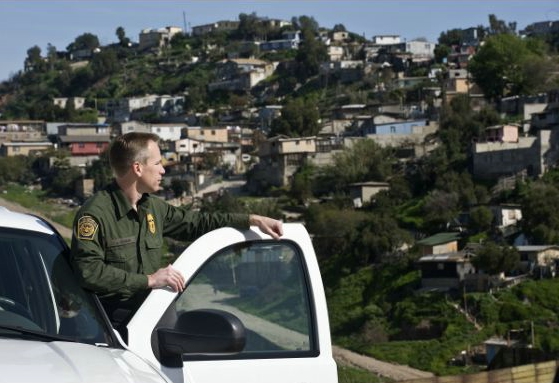
Border Patrol officers face a daunting task |
|
Knocking Down the Kingpins in the Drug Wars
Recent high-profile arrests of drug cartel leaders in Mexico give reason for optimism. But drugs continue to flow across the border into the U.S.
EDITORIAL
Los Angeles Times
December 5, 2010
Mexico's law enforcement agencies have been on a roll, rounding up formerly invincible leaders of vicious drug cartels in a series of high-profile arrests. In August, federal police arrested U.S.-born kingpin Edgar Valdez Villarreal, known as "La Barbie," who headed a gang battling for control of a drug cartel in a region south of Mexico City.
Late last month, the police also arrested Valdez' successor, who happened to be his father-in-law.
Then, in the border city of Ciudad Juarez, they captured Arturo Gallegos Castrellon, the leader of the Aztecas, a gang of thugs and assassins affiliated with the Juarez cartel. |
Gallegos, according to the police, confessed to taking part in 80% of the city's 6,500 drug-related homicides, as well as atrocities that included the massacre of 15 teenagers at a party in July and the fatal shooting in March of U.S. consular staffer Lesley A. Enriquez, her husband and another man.
Each arrest weakens the culture of impunity, and authorities say they hope Gallegos' capture will cripple the Aztecas and return some measure of calm to Ciudad Juarez, now one of the bloodiest battlegrounds in President Felipe Calderon's drug war.
The arrests are certainly a positive development, and could lead to a reduction of violence. But fluctuations in the homicide rate alone are not a reliable metric for progress. When violence rises, the Calderon administration attributes the increase to its unprecedented challenge to drug traffickers. When it falls, the administration attributes the reduction to stepped-up law enforcement efforts.
If the long-term goal is to halt the movement of narcotics from Mexico to the United States, then a better measure of progress is just that: the drug flow. So far, four years and 30,000 deaths after Calderon began cracking down on the cartels, Mexico still supplies most of the foreign marijuana distributed in the U.S., much of the methamphetamine and a substantial percentage of heroin. Also, the State Department estimates that 90% of the cocaine entering the country passes through Mexico. The cartels' wholesale drug earnings range from $13.6 billion to $48.4 billion annually.
That's not to say the recent captures haven't helped Mexican and U.S. authorities gain information about the cartels' trafficking, money-laundering and other illicit operations, as well as the whereabouts of other kingpins. And to be fair, four years may not be enough time to uproot decades of entrenched corruption and violence.
Is Gallegos' arrest a turning point? Possibly. The Aztecas gang has been an obstacle to peace, analysts say, battling for control with the powerful Sinaloa cartel. So, with its head cut off, the group could fall to police efforts, or it could become amenable to negotiating a peace — with the Sinaloa cartel. Either way, it's likely that drugs will continue to flow across the border. |